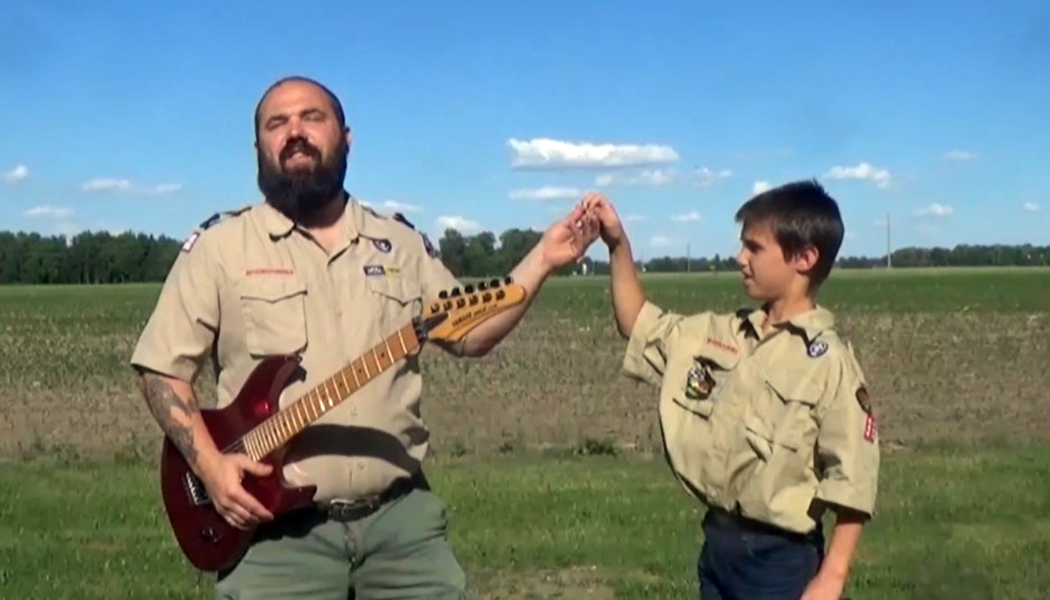Have you ever looked at a rock and wondered about its story? Where did it come from? What mysteries does it hold? For a Webelos Scout, the Earth’s rocks are more than just dusty bits of dirt; they’re time capsules, ancient records of our planet’s history. This exciting adventure into the world of geology is just the beginning of a lifelong journey of discovery.

Image: www.blackswampbsa.org
The Earth rocks badge for Webelos Scouts is a gateway to understanding our planet in a whole new way. It’s about exploring the fascinating world of minerals, rocks, and fossils, and uncovering the secrets they hold. By earning this badge, you’ll become a rock star of knowledge, able to identify different types of rocks, understand how they were formed, and even tell the story of ancient life through fossils.
Discovering the Building Blocks of Earth
Before we delve into the world of rocks, let’s take a moment to understand their building blocks: minerals. Imagine a mineral as a tiny, perfectly formed crystal. These crystals join together, like puzzle pieces, to form rocks. Each mineral has unique properties, like color, hardness, and how it breaks.
- The Mineral Kingdom: The Earth’s crust is a treasure chest of minerals. Some common minerals you might find include:
- Quartz: This hard, clear mineral is often found in rocks, sand, and even your watch!
- Feldspar: This mineral can be white, pink, or gray and is a major component of many rocks.
- Mica: This shiny, flaky mineral can be found in many rocks, making them sparkle!
From Magma to Mountains: The Rock Cycle
Rocks aren’t static; they’re constantly changing, just like everything else on Earth. This ongoing process of transformation is called the rock cycle. It begins with molten rock beneath the Earth’s surface, called magma.
-
Igneous Rocks: When magma cools and solidifies, it forms igneous rock. Think of this as the Earth’s baked bread. Examples include granite, the sturdy rock used for countertops, and basalt, found in ocean floors.
-
Sedimentary Rocks: Over time, weathering and erosion break down igneous rocks into smaller pieces. These fragments, called sediment, are carried by wind, water, or ice and deposited in layers. Pressure and cementation turn these layers into sedimentary rocks. Imagine these as the Earth’s layered cake. Examples include sandstone, limestone, and shale.
-
Metamorphic Rocks: The Earth’s immense heat and pressure can transform existing rocks into metamorphic rocks. This is like taking bread and turning it into toast. Marble is a famous example, formed when limestone is transformed by heat and pressure.
Unearthing the Past: Fossils and Their Secrets
Fossils are the remains or traces of ancient life. They tell stories about creatures that lived millions of years ago. Imagine a time traveler who left behind a trace of their journey.
- Fossil Formation: Fossils form when organisms die and are quickly buried by sediment. Over time, minerals replace the organism’s original material, leaving a hardened imprint.
- Types of Fossils: There are many types of fossils, including:
- Body fossils: These are the actual preserved remains of an organism, like bones, teeth, or shells.
- Trace fossils: These are the tracks, burrows, or other evidence of an organism’s activity.

Image: www.ultimatescouts.com
Rockhounding: Treasure Hunting in Your Backyard
Rockhounding is like going on a scavenger hunt, seeking out fascinating rocks and minerals. You can find amazing specimens in your backyard, a nearby park, or even at the beach.
- Tips for Rockhounding:
- Get a field guide: A field guide will help you identify different rocks and minerals.
- Look for clues: Observe the color, texture, and shape of rocks.
- Be respectful: Don’t collect too many rocks from one area, and leave the environment as you found it.
Earth Rocks and Beyond: A Webelos Adventure
Learning about Earth’s rocks is an incredible journey that can inspire a lifelong love of science and nature. It teaches us about the planet we live on, its history, and its beauty.
Whether you’re exploring a local park, visiting a rock shop, or just examining a dusty old rock in your backyard, remember that each rock holds a story. It’s a testament to Earth’s incredible power, reminding us of its enduring presence and its timeless beauty.
Earth Rocks Webelos
The Adventure Continues: Taking Your Earth Rocks Learning Further
There are many ways to deepen your understanding of rocks, minerals, and fossils.
-
Visit a Museum: Museums have fascinating collections of rocks, minerals, and fossils from around the world. They can provide a deeper understanding of geological processes.
-
Join a Rock Club: Rock clubs are great places to meet people who share your passion. They often organize field trips, workshops, and lectures.
-
Continue Exploring: There is always more to learn about the Earth. Continue exploring your local area and delve deeper into the world of geology.
The Earth rocks badge is just the start of a fantastic adventure. Keep asking questions, researching, and exploring, and you’ll find that the Earth’s rocks are full of surprises. You’ll be amazed by the stories they tell from our planet’s history, and your own love for the natural world will grow along the way.






